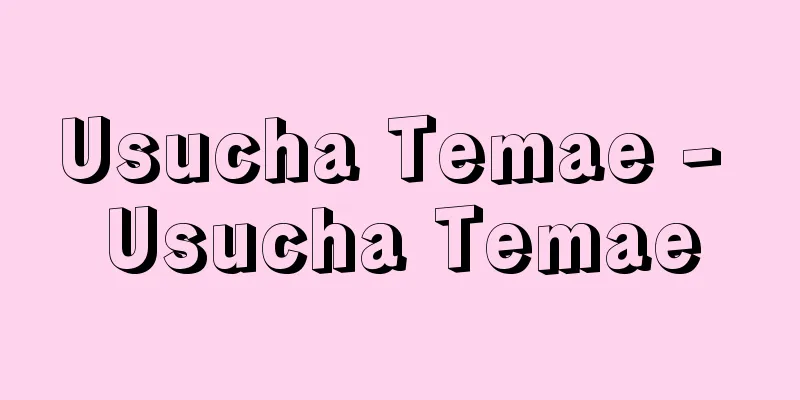Kasuga Taisha Shrine

|
It is located in Kasugano-cho, Nara City. It enshrines four deities: Takemikazuchi-no-mikoto in the first hall, Futsunushi-no-mikoto in the second hall, Amenokoyane-no-mikoto in the third hall, and Himekami in the fourth hall. It is located at the foot of Mikasayama (Mikasayama), a sacred area surrounded by a deep grove of trees such as Nagi, Ashibi, and Sakaki. It is said that this shrine was founded when the capital was moved to Nara in 710 (Wado 3) by Fujiwara no Fuhito, who enshrined Takemikazuchi-no-Mikoto of Kashima Shrine in Hitachi (Ibaraki Prefecture), who had made great contributions in the Age of the Gods and was worshipped as his clan deity, on Ukigumono-mine Peak, the top of Mt. Mifusa, east of the capital, and prayed for peace in the country and prosperity of the people. In 765 (Tenpyo Jingo 1), a part of the fuko (sealed house) of Kashima Shrine was donated to Kasuga-no-Kami and used for rituals. This method is the same as that of the early days of Kashima Miko Shrine, which is common in the Kanto region. On November 9, 768 (Jingo Keiun 2) during the reign of Emperor Shotoku, a shrine building, a sacred fence, and a torii gate were built at the current site, and the three great gods of Katori Shrine in Shimousa (Chiba Prefecture), Futsunushi no Mikoto, and Hiraoka Shrine in Kawachi (Osaka Prefecture), Ameno Koyane no Mikoto and Hime no Mikoto, were enshrined here, and worshipped as the Four Shrines Myojin. According to the entry for 884 in the "Sandai Jitsuroku," the Imperial Court offered a koto, which was a gift from the Imperial Court, because one that had been donated in 768 had been damaged. Since its founding, the shrine has been highly revered by both the court and the people, and has been visited by the Emperor more than 30 times, including the Imperial visit on February 22, 989 (Eiso 1) during the reign of Emperor Ichijo. Naturally, the Fujiwara clan holds the shrine in high esteem, and many ordinary people visit the shrine. Various sacred treasures, furnishings, and lanterns are donated for occasional prayers, celebrations, and offerings. The number of lanterns donated is particularly large, and they are called the "ten thousand lanterns of Kasuga." In the Engishiki Shinmeicho, four Kasuga deities are listed as Myojin Taisha shrines and are given official offerings. As the idea of syncretism between Shinto and Buddhism developed, the miraculous powers and good fortune of Kasuga Daimyojin came to be preached, and it came to be called one of the three shrines, along with Ise Jingu and Iwashimizu Hachimangu, and has come to be widely worshipped. Kasuga faith is expressed in the Kasuga Mandala, the Oracle of the Three Shrines, and the Kasuga Gongen Miracle. Branch shrines of Kasuga Shrine have been established all over the country, and it is said that there are currently more than 3,000 of them. In particular, Oharano Shrine in Nagaokakyo and Yoshida Shrine in Heiankyo, which were branch shrines established near the capital, are both listed as official shrines. There are many records of this shrine in the national history. The main events include its being listed as one of the 22 official shrines, its decision to hold the Kasuga Festival on the day of the monkey in February and November, its adoption of a female priest system, and its promotion to the rank of Shoichii. In particular, the strong petition made by the monks of Kofuku-ji Temple and the priests of Kasuga Shrine, offering the sacred tree of Kasuga, is historically famous. During the Kamakura period, Shogun Minamoto no Yoritsune established a separate Kasuga Shrine in Kamakura. Following the Shinbutsu Bunri (law to separate Shinto and Buddhism) order of the Meiji Restoration, the shrine was removed from the control of Kofuku-ji Temple and became a Kanpei Taisha (Great Shrine of the Imperial Court). In 1946 (Showa 21), Kasuga Shrine was renamed Kasuga Taisha (Great Shrine of the Imperial Court). [Ishu Ochiai] Temple grounds and architectureThe one million square meter sacred grounds, including the Kasugayama virgin forest (a special natural monument), are a treasure trove of flora and fauna. The shrine is famous for the more than 1,000 sacred deer (national natural monuments) that roam within its grounds. It is said that these deer were the offspring of the white deer that the enshrined deity Takemikazuchi-no-Mikoto rode on when he moved his shrine from Kashima to Mt. Mifusa. The deer have been protected as sacred deer since the shrine's founding. Incidentally, sacred deer are also kept within the grounds of Kashima Jingu Shrine. The main hall of Kasuga Taisha Shrine in particular is known as Kasuga-zukuri, and the current main hall was rebuilt in 1863 (Bunkyu 3) and is a national treasure. Other buildings such as the first torii gate (Kasuga torii), carriage house, corridor, and offering hall are designated as important national cultural properties. There are 2,000 stone lanterns on the approach to the shrine and 1,000 hanging lanterns on the corridors, the oldest of which is said to have been donated by Fujiwara no Yorimichi in 1038 (Choureki 2). Until the end of the Edo period, the lanterns were lit every night, but now they are all lit on Setsubun in February and on August 14th and 15th as a 10,000-lantern festival. In addition to Wakamiya Shrine, which enshrines Ame-no-oshikumone-no-mikoto, there are five auxiliary shrines within the shrine grounds, including Enomoto Shrine, Hongu Shrine, Kii Shrine, and Mizuya Shrine, as well as 41 subordinate shrines within the grounds, including Tajikarao Shrine. There are also 15 subordinate shrines outside the grounds, including Takayama Shrine. The deity enshrined at Wakamiya Shrine is the child deity of the main shrine, and the shrine building is the same size as the main shrine, and is designated as an Important Cultural Property of Japan. In 1998, it was registered as a World Heritage Site (World Heritage Site. Nara's cultural properties include eight shrines and temples, including Todaiji Temple). [Ishu Ochiai] FestivalThe annual Kasuga Festival was set to March 13th after the Meiji era and has remained so to this day. It is solemnly celebrated with the attendance of an imperial envoy and is one of the three imperial festivals along with Kamo and Iwashimizu. The Otaue Festival is also held on March 15th. This festival is said to have started on the first day of the New Year in 1163 (Chokan 1) during the reign of the 78th Emperor Nijo. The annual festival of the auxiliary shrine Wakamiya Shrine, the On Festival (Kasuga Wakamiya On Festival), is particularly famous. The divine spirit is enshrined at the Otabisho (temple), and a variety of traditional religious performances are offered, including Kagura, Bugaku, Seino, Dengaku, Sarugaku, Noh, and Sumo. [Ishu Ochiai] Sacred treasureThe shrine's many treasures testify to the reverence shown to it by the Fujiwara clan, samurai families, and common people alike. In particular, there are many items designated as national treasures or important national cultural properties, such as the ancient sacred treasures of the main shrine and young shrine that represent the pinnacle of craftsmanship from the Heian period, excellent swords and armor from the Heian, Kamakura, and Nanboku-cho periods, Kasuga mandalas, Bugaku masks, picture scrolls, and documents, which are all stored and exhibited in the Treasure Hall. [Ishu Ochiai] [Reference] |The inner gate and the corridor in front of the main hall (both designated as important cultural properties by the national government). Part of the World Heritage Site "Cultural Assets of Ancient Nara" (registered in 1998) Nara City, Nara Prefecture © Takehiko Yano "> Kasuga Taisha Shrine Source: Shogakukan Encyclopedia Nipponica About Encyclopedia Nipponica Information | Legend |
|
奈良市春日野(かすがの)町に鎮座。第一殿に武甕槌命(たけみかづちのみこと)、第二殿に経津主命(ふつぬしのみこと)、第三殿に天児屋根命(あめのこやねのみこと)、第四殿に比売神(ひめかみ)の4柱を祀(まつ)っている。鎮座地は御蓋山(みかさやま)(三笠山)の麓(ふもと)で、ナギ、アシビ、サカキなどの深い樹叢(じゅそう)に囲まれた浄域となっている。当大社は、710年(和銅3)都が奈良に移されると、藤原不比等(ふひと)が、神代に功績のあった、また同氏が氏神として崇(あが)める常陸(ひたち)(茨城県)鹿島(かしま)神宮の武甕槌命を、都の東方、御蓋山の頂上浮雲峰(うきぐものみね)に祀り、国土安穏、国民繁栄を祈ったのが、その始まりといわれている。765年(天平神護1)には鹿島神宮の封戸(ふこ)の一部を春日神に寄進し、祭祀(さいし)にあてている。この方式は、関東に多い鹿島御子(みこ)神社の草創期当初と同様である。称徳(しょうとく)天皇の768年(神護景雲2)11月9日、現在の地に社殿、瑞垣(みずがき)、鳥居を造営し、下総(しもうさ)(千葉県)香取(かとり)神宮の経津主命、河内(かわち)(大阪府)枚岡(ひらおか)神社の天児屋根命・比売神の3柱の大神をともに祀り、四社明神として崇め奉ったのである。『三代実録(さんだいじつろく)』の元慶(がんぎょう)8年(884)の条によると、朝廷より琴の奉献があり、これは、768年に寄進したものが破損したためであると記されている。創建以来、朝野の厚い崇敬が寄せられ、一条(いちじょう)天皇989年(永祚1)2月22日の行幸をはじめ、行幸・御幸三十余度を数える。当然のことながら藤原氏一門の崇敬は厚く、また衆庶の参拝も数多く、折々の祈願、慶祝、報賽(ほうさい)には、種々の神宝、調度、灯籠(とうろう)の寄進があり、とくに奉納された灯籠の数はおびただしく、春日の万灯籠と称されている。『延喜式神名帳(えんぎしきしんめいちょう)』には春日祭神4座が名神(みょうじん)大社に列し、官幣にあずかっている。神仏習合思想の発展とともに春日大明神の霊験(れいげん)や縁起(えんぎ)が説かれるようになり、伊勢(いせ)神宮、石清水八幡宮(いわしみずはちまんぐう)と並んで三社といわれ、広く信仰されるに至った。春日信仰は、春日曼荼羅(まんだら)、三社託宣、『春日権現霊験記(かすがごんげんれいげんき)』などに表現されており、全国至る所に春日社の分社が創祀(そうし)され、現在その数は3000社を超えるといわれている。とくに都の近くに分祀した、長岡京の大原野(おおはらの)神社、平安京の吉田神社は、いずれも官社に列している。国史上にも当社に関する記載は数多い。おもなものとして、官社二十二社の一に列したこと、春日祭を2月と11月上の申(さる)の日と定めたこと、斎女(さいじょ)の制をとったこと、神階が正一位となったことなどがあり、とくに興福寺の僧徒と春日社の神人(じにん)が、春日の神木を奉じて強訴(ごうそ)したことは歴史的に名高い。鎌倉時代になると、将軍源頼経(よりつね)は鎌倉に春日社を分祀している。明治維新の神仏分離令により興福寺の支配を離れ、官幣大社となる。1946年(昭和21)春日神社を春日大社と改称した。 [落合偉洲] 境内・建築春日山原生林(特別天然記念物)を含む100万平方メートルの神域は動植物の宝庫である。境内に遊ぶ1000頭以上の神鹿(しんろく)(国の天然記念物)は名高く、これは、祭神武甕槌命が鹿島から御蓋山に遷座のときに乗ってきた白鹿が繁殖したものと伝え、神鹿として創建以来保護されている。ちなみに鹿島神宮の境内においても神鹿が飼われている。春日大社の本殿はとくに春日造(づくり)と称され、現在の本殿は1863年(文久3)に再建されたもので、国宝となっている。そのほか、一の鳥居(春日鳥居)、車舎(くるまやどり)、廻廊(かいろう)、幣殿などの諸建築物は国の重要文化財に指定されている。参道には2000の石灯籠、廻廊に1000の釣灯籠があり、もっとも古いものは1038年(長暦2)藤原頼通(よりみち)寄進のものと伝えられる。江戸末期までは各灯籠は毎夜ともされていたが、現在は2月の節分と8月14、15日に万灯籠としてすべてに火がともされる。なお、境内には、天押雲根命(あめのおしくもねのみこと)を祀る若宮神社のほか、榎本(えのもと)神社、本宮(ほんぐう)神社、紀伊神社、水谷(みずや)神社の合計5社の摂社と、手力雄(たぢからお)神社をはじめとする41社の境内末社が祀られている。また境外末社として、高山(こうぜん)神社をはじめ15社が祀られている。若宮神社の祭神は本社の御子神(みこがみ)にあたり、社殿は本社と同規模で、国の重要文化財となっている。1998年(平成10)には、世界遺産の文化遺産として登録された(世界文化遺産。奈良の文化財は東大寺など8社寺等が一括登録されている)。 [落合偉洲] 祭礼例祭の春日祭は、明治以降に3月13日と定められ、現在に至っているが、勅使参向のもと厳粛に奉仕されており、加茂(かも)、石清水とともに三勅祭といわれている。また3月15日に御田植(おたうえ)祭が行われる。この祭は、第78代二条(にじょう)天皇の1163年(長寛1)正月申の日に始められたと伝えられている。摂社若宮神社の例祭「おん祭」(春日若宮おん祭)はとくに有名で、御旅所(おたびしょ)に神霊を奉遷し、神楽(かぐら)、舞楽、細男(せいのお)、田楽(でんがく)、猿楽(さるがく)、能、相撲(すもう)など多彩な内容と伝統ある神事芸能が奉納される。 [落合偉洲] 神宝藤原氏一門、武家、庶民に至るまでその崇敬を物語る社宝は多い。とくに平安時代の工芸の粋を尽くした本宮・若宮の御料古神宝類、平安・鎌倉・南北朝時代にわたる刀剣・甲冑(かっちゅう)の優品、春日曼荼羅(まんだら)、舞楽面、絵巻、文書類など国宝、国重要文化財に指定されるものも多く、それらは宝物殿に収蔵・展観されている。 [落合偉洲] [参照項目] |本殿前にある中門と御廊(ともに国指定重要文化財)。世界文化遺産「古都奈良の文化財」の一部(1998年登録) 奈良県奈良市©矢野建彦"> 春日大社 出典 小学館 日本大百科全書(ニッポニカ)日本大百科全書(ニッポニカ)について 情報 | 凡例 |
>>: Kasuga Festival - Kasugasai
Recommend
Karnak Temple
The Karnak Temple Complex was dedicated to Amun, t...
Kerry Blue Terrier
It is a domestic dog that originated in the UK. It...
Gakusando Inpu - Gakusando Inpu
…The Qing Dynasty had Wu Guanjun’s 10 volumes of ...
Kitahara Senroku
1887-1951 A metal engraver from the Taisho to Sho...
Fenugreek (English spelling)
An annual plant of the legume family (illustration...
Kwŏn Kǔn (English spelling)
1352‐1409 A Confucian scholar and official in the ...
Dovizi, B. (English spelling) DoviziB
...From the end of the 15th century to the beginn...
Mother Complex
A term referring to excessive attachment or fixati...
Koji (rice malt) - Koji
Koji is made by growing mold such as Aspergillus o...
Gerasimov, S.
...The war ended in victory in 1944, but along wi...
Kaiseki Matsumura
A religious leader and the head of the Dokai (Way...
Karoku Persecution
...The mountain name is Hokoku-san and the temple...
Wallace Johnson, I.
…In the second half of the 19th century, the Brit...
Bahnar
…(1) A general term for the mountain minority gro...
Aleksandr Vasil'evich Chayanov
A Russian agricultural economist. After graduatin...









